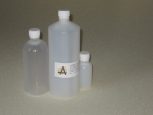- Additives
- Adhesives
- Chopped strand mats
- Composite machines
- Core materials
- Epoxy resins
- Fabrics
- Fillers
- Gelcoats
- Grinding
- Jesmonite ® acrylic systems
- Pigments
- Polishing
- Polyester resins
- Polyurethane resins
- Release agents
- Safety equipments
- Silicones
- Tools and auxiliary
- Vacuum bagging materials
- Vinylester resins
Release agents
Polymer-based mold release agents form a heat-resistant and multi-release coating on the tool surface. This is due to the fact that they adhere strongly to the surface of the tool and very little of them is transferred to the product. For this reason, the product with a flawless surface can be painted or glued without further pre-treatment.
Today, perhaps the most advanced polymer-based mold release agents are the so-called “semi-permanent” (semi-continuous) mold release types, which do not contain halogen compounds, however, their heat resistance often exceeds that of Teflon-containing ones. These crosslinked systems form a hard dry-touch film about 1μm thick on the surface of the tool. These mold separators give the thinnest film and perfectly reproduce the fine drawings of the tool.
Their advantages:
- Abrasion resistant, they form a number of release films
- Relocation is minimal, so the product does not need to be cleaned
- It does not tend to accumulate in the tool, so the tool needs to be cleaned less frequently
- There are few surface defects
- The cost per product is lower than with other mold release agents
Disadvantages:
- They form a dry film and therefore have a low slip effect ("hard deposition")
- The application rules must be observed. → Less user friendly
- It takes time to crosslink, the workflow is interrupted
- Limited storage capacity, for example, air humidity may crosslink in the container





